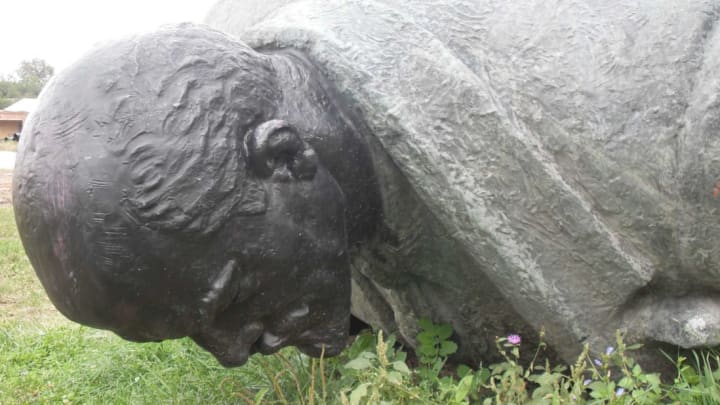Since the racial justice movement sparked by the killing of George Floyd swept across the country, dozens of monuments have been toppled by protesters or officially removed. Critics say that statues of Confederate leaders, enslavers, and colonizers glorify the ugliest parts of American history. According to the monuments' defenders, statues are historical artifacts, and destroying them is the same as pretending that history never happened. This debate isn't unique to the United States; Germany has been grappling with similar questions for decades, and as Atlas Obscura reports, the Citadel Museum in the Berlin suburb of Spandau is one response.
Located in the old provisions depot of a Renaissance fortress, the Citadel Museum aims to display monuments to oppressive figures and regimes in a different context than what was originally intended. A bronze bell branded with a swastika is the centerpiece of an exhibition on churches under National Socialism, Nazi statues riddled with bullet holes are displayed in the condition they came in, and an eight-ton granite head of Vladimir Lenin lies on the ground where children can climb on it.
Many of the museum's artifacts helped sanitize racist and antisemitic atrocities, and the curators understand the dangers of displaying them carelessly. One way they've divorced the items from their roots is by displaying them in unconventional positions. Statues are shown lying on their sides or even upside down. Visitors are encouraged to touch and "play" with the pieces in order to remove any illusion of sanctity.
The Citadel Museum isn't the only place of its kind. In Budapest, Hungary, Memento Park houses statues of Lenin and other Communist leaders that no longer belong in central locations. As certain statues continue to face scrutiny in the U.S., relocating them—whether it's to a park, museum, or cemetery—could be a possible alternative to complete destruction.
[h/t Atlas Obscura]
